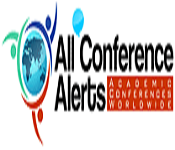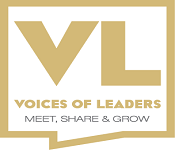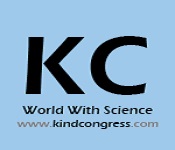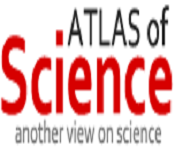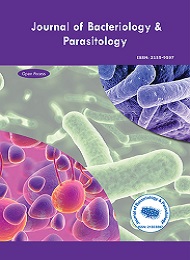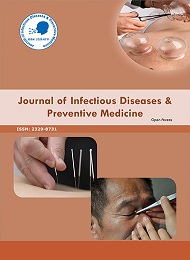Coronavirus is a provisional name given to coronaviruses of medical significance before a permanent name is decided upon. Although
coronaviruses are endemic in humans and infections normally mild, such as the common cold (caused by human coronaviruses in ~15% of cases), cross-species transmission has produced some unusually virulent strains which can cause viral pneumonia and in serious cases even
acute respiratory distress syndrome and death.
Bacteria common noun bacteria, singular bacterium is a type of biological cell. They constitute a large domain of prokaryotic microorganisms. Typically, a few micrometers in length, bacteria have several shapes, ranging from spheres to rods and spirals. Bacteria were among the first life forms to appear on Earth and are present in most of its habitats. Bacteria inhabit soil, water, acidic hot springs, radioactive waste, and the deep biosphere of the earth's crust. Bacteria also live in symbiotic and parasitic relationships with plants and animals.
Antigen-antibody interaction, or antigen-antibody reaction, is a specific chemical interaction between antibodies produced by B cells of the white blood cells and antigens during immune reaction. The antigens and antibodies combine by a process called agglutination. It is the fundamental reaction in the body by which the body is protected from complex foreign molecules, such as pathogens and their chemical toxins. In the blood, the antigens are specifically and with high affinity bound by antibodies to form an antigen-antibody complex. The immune complex is then transported to cellular systems where it can be destroyed or deactivated.
Reproductive tract infection (RTI) are infections that affect the reproductive tract, which is part of the Reproductive System. For females, reproductive tract infections can affect the upper reproductive tract (fallopian tubes, ovary and uterus) and the lower reproductive tract (vagina, cervix and vulva); for males these infections affect the penis, testicles, urethra or the vas deferens. The three types of reproductive tract infections are endogenous infections, iatrogenic infections and the more commonly known
sexually transmitted infections. Each has its own specific causes and symptoms, caused by a bacterium, virus, fungus or other organism. Some infections are easily treatable and can be cured, some are more difficult, and some are non curable such as
AIDS and herpes.
Mycobacterium is a genus of Actinobacteria, given its own family, the Mycobactericidal. Over 190 species are recognized in this genus. This genus includes pathogens known to cause serious diseases in mammals, including tuberculosis (Mycobacterium tuberculosis) and leprosy (Mycobacterium leprae) in humans. The Greek prefix myco- means "fungus," alluding to the way mycobacteria have been observed to grow in a mold-like fashion on the surface of cultures. It is acid fast and cannot be stained by the Gram stain procedure.
Plant pathology (also phytopathology) is the scientific study of diseases in plants caused by pathogens (infectious organisms) and environmental conditions (physiological factors). Organisms that cause infectious disease include fungi, oomycetes, bacteria, viruses, viroid’s, virus-like organisms, phytoplasmas, protozoa, nematodes and parasitic plants. Not included are ectoparasites like insects, mites, vertebrate, or other pests that affect plant health by eating of plant tissues. Plant pathology also involves the study of pathogen identification, disease etiology, disease cycles, economic impact, plant disease epidemiology, plant disease resistance.
In biology, a pathogen in the oldest and broadest sense, is anything that can produce disease. A pathogen may also be referred to as an infectious agent, or simply a germ. The term pathogen came into use in the 1880s. Typically, the term is used to describe an infectious microorganism or agent, such as a virus, bacterium, protozoan, prion, viroid, or fungus. Small animals, such as certain kinds of worms and insect larvae, can also produce disease. However, these animals are usually, in common parlance, referred to as parasites rather than pathogens.
Human Immunodeficiency Virus damages the immune system. The Untreated HIV contaminates and damages CD4 cells. Thereafter HIV kills more and more CD4 cells, due to which body is bound to get different sorts of diseases and malignant growths. HIV is generally transmitted through organic liquids that incorporates blood, breast milk, semen, vaginal and rectal liquids. The infection generally doesn't spread through air, water or through easy-going contact. HIV is a lifelong condition and right now there is no cure for this severe disease. Without treatment, a man with HIV is probably going to build up a serious condition called AIDS.
Animal vaccination is the immunization of a domestic, livestock or wild animal. The practice is connected to veterinary medicine. The first animal vaccine invented was for chicken cholera in 1879 by Louis Pasteur. The production of vaccines for animals and humans has always been linked, this relationship has been coined 'One Health', as at least 61% of all human pathogens originate from animals. Two main examples of this link are the rabies and smallpox vaccines. The production of such vaccines encounter issues in relation to the economic difficulties of individuals, the government and companies.
The upper respiratory tract is generally considered to be the airway above the glottis or vocal cords, sometimes it is taken as the tract above the cricoid cartilage. This part of the tract includes the nose, sinuses, pharynx, and larynx. Typical infections of the upper respiratory tract include tonsillitis, pharyngitis, laryngitis, sinusitis, otitis media, certain types of influenza, and the common cold. Symptoms of URIs can include cough, sore throat, runny nose, nasal congestion, headache, low grade fever, facial pressure and sneezing.
Lower respiratory tract infection(LRTI) is a term often used as a synonym for pneumonia but can also be applied to other types of infection including lung abscess and acute bronchitis. Symptoms include shortness of breath, weakness, fever, coughing and fatigue. A routine chest X-ray is not always necessary for people who have symptoms of a lower respiratory tract infection. Influenza affects both the upper and lower respiratory tracts Antibiotics are the first line treatment for pneumonia; however, they are neither effective nor indicated for parasitic or viral infections. Acute bronchitis typically resolves on its own with time.
Chickenpox, also known as varicella, is a highly contagious disease caused by the initial infection with varicella zoster virus (VZV). The disease results in a characteristic skin rash that forms small, itchy blisters, which eventually scab over. It usually starts on the chest, back, and face. It then spreads to the rest of the body. Other symptoms may include fever, tiredness, and headaches. Symptoms usually last five to seven days. Complications may occasionally include pneumonia, inflammation of the brain, and bacterial skin infections.
A
malaria vaccine is a vaccine that is used to prevent malaria. The only approved vaccine as of 2015 is RTS,S, known by the trade name Mosquirix. It requires four injections, and has a relatively low efficacy. Due to this low efficacy, the World Health Organization (WHO) does not recommend the routine use of the RTS,S vaccine in babies between 6 and 12 weeks of age.A WHO-led implementation program is piloting the vaccine in three high-malaria countries in Africa in 2019. The first phase of the project, covered by grants from Unit aid, Gavi and the Global Fund, is planned to establish the feasibility, impact and safety of RTS, S, when used as part of a routine immunization program. Research continues into recombinant protein, attenuated whole organism and viral vectored vaccines.
Zika virus (ZIKV) is a member of the virus family Flaviviridae. It is spread by daytime-active Aedes mosquitoes, such as A. aegypti and A. albopictus. The infection, known as Zika fever or Zika virus disease, often causes no or only mild symptoms, similar to a very mild form of dengue fever. bola, also known as Ebola virus disease (EVD), is a viral haemorrhagic fever of humans and other primates caused by ebolaviruses. Signs and symptoms typically start between two days and three weeks after contracting the virus with a fever, sore throat, muscular pain, and headaches.
A
viral disease (or viral infection, or infectious disease) occurs when an organism's body is invaded by pathogenic viruses, and infectious virus particles (virions) attach to and enter susceptible cells Double-stranded DNA families: three are non-enveloped (Adenoviridae, and Polyomaviridae) and two are enveloped (Herpesviridae and Poxviridae). All of the non-enveloped families have icosahedral capsids. Partly double-stranded DNA viruses: Hepadnaviridae. These viruses are enveloped.
Medical microbiology, the large subset of microbiology that is applied to medicine, is a branch of medical science concerned with the prevention, diagnosis and treatment of infectious diseases. In addition, this field of science studies various clinical applications of microbes for the improvement of health. There are four kinds of microorganisms that cause infectious disease: bacteria, fungi, parasites and viruses, and one type of infectious protein called prion.
Epidemiology is the study and analysis of the distribution (who, when, and where), patterns and determinants of health and disease conditions in defined populations. It is a cornerstone of public health, and shapes policy decisions and evidence-based practice by identifying risk factors for disease and targets for preventive healthcare. Epidemiologists help with study design, collection, and statistical analysis of data, amend interpretation and dissemination of results (including peer review and occasional systematic review).
Foodborne illness is an infection or irritation of the gastrointestinal (GI) tract caused by food or beverages that contain harmful bacteria, parasites, viruses, or chemicals. Common foodborne illness symptoms include vomiting, diarrhea, abdominal pain, fever, and chills.
Diagnosis is the identification of the nature and cause of a certain phenomenon. Diagnosis is used in many different disciplines, with variations in the use of logic, analytics, and experience, to determine "cause and effect". In systems engineering and computer science, it is typically used to determine the causes of symptoms, mitigations, and solutions. It is the process of determining which disease or condition explains a person's symptoms and signs. It is most often referred to as diagnosis with the medical context being implicit.
Tuberculosis (TB) is an infectious disease usually caused by
Mycobacterium tuberculosis (MTB) bacteria. Tuberculosis generally affects the lungs but can also affect other parts of the body. Most infections show no symptoms, in which case it is known as latent tuberculosis. About 10% of latent infections progress to active disease which, if left untreated, kills about half of those affected. The classic symptoms of active TB are a chronic cough with blood-containing mucus, fever, night sweats, and weight loss.
The word Heme came from Greek which means blood.
Hematology involves the diagnosis and treatment of patients who have disorders of the blood and bone marrow. It is mainly responsible for the diagnosis of benign and malignant disorders of the red and white blood cells, platelets and the coagulation system in adults and children. Blood disorders are conditions that impact the blood's ability to function correctly; their patients may have a serious life- threatening illness such as leukemia, lymphoma or myeloma that requires chemotherapy.
Physicians who work on treating hematologic disorders, referred to as Hematologists. Hematologists as well hematopathologists both work in conjugation for giving the best therapy.
Anemia is a condition in which you don't have enough healthy red blood cells to carry adequate oxygen to the body's tissues. Having Anemia may make you feel tired and weak. There are many forms of Anemia, each with its own cause. Anemia can be temporary or long term, and it can range from mild to severe.
Sub- tracks:
1. Iron deficiency and impaired immunity
2. Iron and pathogens
3. Causes of Anemia
4. Risk factors
5. Nutritional Anemia
6. Stages of anemia
Myeloma, also known as multiple myeloma, it can be benign and malignant, is a blood cancer arising from plasma cells. At any one time there are around 17,500 people living with myeloma in the UK. It accounts for 15 per cent of blood cancers, and two per cent of all cancers. Myeloma mainly affects those over the age of 65, however it has been diagnosed in people as young as 20.
Sub- tracks:
1. Multiple Myeloma
2. Signal Transduction
3. Metastatic Cancer
4. Hematologic Cancer
5. Signaling Pathway
6. Information on Drugs
7. Medicine for Inflammation
Coagulopathy is a condition in which the blood's ability to coagulate (form clots) is impaired. This condition can cause a tendency toward prolonged or excessive bleeding, which may occur spontaneously or following an injury or medical and dental procedures
Sub- tracks:
1. Thrombocytopenia
2. Qualitative Platelet Disorders
3. Inherited Thrombocytopenia
4. Vascular Abnormalities
5. Coagulopathy of liver disease
6. drug-induced platelet dysfunction
7. Acquired clotting factor inhibitors
8. Hemophilia A
9. Hemophilia B
Leukemia is a cancer which starts in blood-forming tissue, usually the bone marrow. It leads to the over-production of abnormal white blood cells, the part of the immune system which defends the body against infection.
Sub- tracks:
1. Oncogene
2. Pancreatic and Colorectal Cancer
3. Gynecologic Oncology
4. Melanoma and Carcinoma
5. Molecular & Cancer Biomarkers
6. Leukemia and Bone marrow Transplantation
7. Neoplasms
8. Biomedical Research
Hemostasis is a process which causes bleeding to stop, meaning to keep blood within a damaged blood vessel. It is the first stage of wound healing. This involves coagulation, blood changing from a liquid to a gel. Intact blood vessels are central to moderating blood's tendency to form clots.
Sub- tracks:
1. Hemodialysis
2. Thrombotic Thrombocytopenic Purpura
3. Hemodialysis
4. Hemolytic Anemia
Thalassemia is a blood disorder passed down through families (inherited) in which the body makes an abnormal form or inadequate amount of hemoglobin. Hemoglobin is the protein in red blood cells that carries oxygen. The disorder results in large numbers of red blood cells being destroyed, which leads to anemia.
Sub- tracks:
1. Hemochromatosis.
2. Idiopathic thrombocytopenic purpura.
3. Malaise.
4. Bone marrow transplantation.
5. Blood transfusion.
Human immunodeficiency virus infection and acquired immune deficiency syndrome (HIV/AIDS) is a spectrum of conditions caused by infection with the human immunodeficiency virus (HIV). Typically, this is followed by a prolonged period with no symptoms. As the infection progresses, it interferes more with the immune system, increasing the risk of developing common infections such as tuberculosis, as well as other opportunistic infections, and tumors that rarely affect people who have uncompromised immune systems. These late symptoms of infection are referred to as acquired immunodeficiency syndrome (AIDS). This stage is often also associated with unintended weight loss.
Sub- tracks:
1. Sexually Transmitted Diseases
2. Immunology and Vaccine development
3. Diagnosis and Treatment
4. Sexual Health
5. Clinical Research and Case Reports
There are certain methods for treatment of Blood Disorders. Main treatment for blood disease is named replacement therapy. Researchers are attempting to search out ways that to correct the defective genes that cause Blood Disorders. Gene therapy hasn't nonetheless developed to the purpose that it's accepted treatment for hemophilia. However, researchers still take a look at gene therapy in clinical trials. Bone marrow Transplantation, Hematopoietic stem cell therapy and Cord blood transplantations are new rising varieties of treatment for hemophilia and alternative blood disorders.
Initially for detecting the blood disorders bone marrow biopsy will be carried out which involves the study of cytogenetic and surface proteins on bone marrow cells and this study process referred to be flow cytometry. Treating of blood disorder may vary for every particular disorder, this can include use of coagulation factor support, immune modulating therapies, chemotherapy, and bone marrow transplantation palliative care must be taken for the patients with complex disorder. Generally, through physical examinations, medical reports are used to detect the disorders by physicians to initiate the best therapy.
Sub- tracks:
1. Bone marrow transplantation.
2. Malaise.
3. Hemochromatosis.
4. Blood transfusion
5. Idiopathic thrombocytopenic purpura.
Blood transfusion is the process of receiving whole blood or blood products into one’s systemic circulation intravenously. Blood transfusion is usually done in cases of deficiencies, to increase the oxygen saturation, during accidents or during surgery, to treat hematologic conditions such as severe anemia, leukemia, and sickle cell disease. Transfusion may include injection of whole blood or components such as red blood cells, white blood cells, plasma, platelets or clotting factors. Hence a very systematic protocol is followed for blood transfusion which includes processing and testing the donor’s blood for possible infectious disorders, particularly for viruses such as Hepatitis B and C, HIV, and West Nile Virus. The system should include monitoring, identification, reporting, investigation and analysis of adverse events near-misses and reactions related to transfusion and manufacturing. Research and Development in this area of Hematology is hence considered a very important aspect.
Sub- tracks:
1. Pulmonary Embolism
2. Graft versus Host disease (GVHD).
3. Sickle cell anemia
4. Blood Disorders
5. Compatibility testing
6. Organ Transplant
7. Disseminated Intravascular Coagulation
The umbilical cord is a conduit between the developing embryo or fetus and the placenta. The umbilical vein supplies the fetus with nutrient-rich blood from the placenta The hematopoietic bone marrow transplant, the HSC are removed from a large bone of the donor, typically the pelvis, through a large need let that reaches the center of the bone. Acute myeloid leukemia is a cancer of the myeloid line of blood cells, characterized by the rapid growth of abnormal white blood cells that accumulate in the bone marrow and interfere with the production of normal blood cells and the Thrombosis is the formation of a blood clot inside a blood vessel, obstructing the flow of blood through the circulatory system. The Hemostatic is a process which causes bleeding to stop, meaning to keep blood within a damaged blood vessel this is the first stage of wound healing.
The theme of Hematologic ailment is massive, counting disorders of cellular component extremes, insufficiencies or ruin, and dysfunction. Most of the ailments may lead to neurologic impediment. Some of these conditions are very specific to the hematologic complaint Anemia whereas others are common to numerous circumstances. This session deals with Hematologic and their associated neurologic disorders.
Sub- tracks:
1. Thrombocytopenia
2. Sickle Cell Anemia
3. Cerebra Venous Thrombosis
4. Thalassemia with paraplegia
5. Leptomeningeal metastasis
6. Hypercoagubility and ischemic stroke
7. Ovarian Hyperstimulation Syndrome
8. Polyneuropathy associates with leukoencephalopathy
Hematology-oncology is the science applied to treat blood disorders and diseases like cancers (oncology). Also, it treats with blood cancers and some disease includes iron deficiency anemia, thalassemia’s as well other organ cancers. The treatment will vary for individual suffering with myeloma based on many factors, in this multiple myeloma it includes a stage referred smoldering stage in which it doesn’t show active symptoms that is the state in which myeloma cells present in the body were not progressive.
Sub- tracks:
1. Acute myelogenous leukaemia.
2. Non-Hodgkin’s lymphomas.
3. Chronic lymphocytic leukaemia.
4. Acute lymphoblastic leukaemia.
5. Acute monocytic leukaemia.
6. Hodgkin’s lymphomas.
Hematology oncology is the most important part of Hematology research, a major part of blood based researches is carried out in this field. Lymphatic leukemic which effect the white blood cells, they are closely related to the lymphomas and some of them are unitary diseases which related to the adult T cells leukemia these come under the lymph proliferative disorders. The cancer which originates from white blood cells are called as lymphoma and this disorder is mainly seen in Hodgkin lymphoma these diseases are treated by radiation and chemotherapy, or hematopoietic stem cell transplantation. The cancer which starts with in the cell is called as Non Hodgkin lymphocytes and these lymphocytes are of lymph nodes. The bone marrow which develops too many white blood cells leads to multiple myeloma. The further details on malignance are been discussed in Hematology oncology conference.
The overall market for the hematological pharmaceuticals in top point as it is as often as possible foreseen to be improved over two or three decades. According to the overall market master, the hematology cure and definite market is depended upon to create at the rate of 7.5% from 2015-2020. A portion of the best drug store enterprises creating Biological Drugs and Generic Drugs fuse. Takeda Oncology, Bristol-Myers Squibb, Boehringer Ingelheim, Roche, Novartis, Celgene, Johnson and Johnson, Lilly, Takeda, AstraZeneca, Merck and Co., Amgen, Janssen bio tech, Pfizer, Bayer, Otsuka, Sanofi, Astellas, Eisai, AbbVie, Pharmacyclics, Merck KGaA and Incyte.
Stem cell research deals with research and publication of high quality manuscripts related to stem cells. Stem cells are cells of multicellular organisms that can differentiate into other types of cells. They can divide more cells of the same type of stem cells. For a cell to be considered a stem cell, it should be self-renewing and must be either totipotent or pluripotent. Haemopoietic stem cell transplants are used in the treatment of cancers and other immune system disorders.
Sub- tracks:
1. Stem cell therapy.
2. Different types of stem cells.
3. Stem cell transplantation.
4. Stem cell biomarkers.
5. Stem cell products.
Myelodysplastic disorders are a gathering of diseases in which juvenile platelets in the bone marrow don't develop and in this way don't end up noticeably solid platelets. At an early stage there are ordinarily no indications. Later side effects may incorporate feeling tired, shortness of breath, simple dying, or successive contaminations. A few sorts may form into intense myeloid leukemia.
Hazard factors incorporate past chemotherapy or radiation treatment, presentation to specific chemicals, for example, tobacco smoke, pesticides, and benzene, and introduction to substantial metals, for example, mercury or lead. Issues with platelet development result in some mix of low red platelets, low platelets, and low white platelets. A few sorts have an expansion in youthful platelets, called impacts, in the bone marrow or blood. Medicines may incorporate steady care, sedate treatment, and foundational microorganism transplantation.
The Center for Hematologic Oncology provides specialized care for all types of cancers of the blood, including leukemia, lymphoma, multiple myeloma, as well as related disorders of the blood, such as aplastic anemia and Myelodysplastic syndrome.
Protein Biomarkers can be utilized as biomarkers for early location of tumors particularly utilized for the ID of bosom growth. Symptomatic Patients with suspected pancreatic malignancy will experience an underlying CT sweep to decide whether a presume mass is confined and evacuated by surgery 63% of patients will be determined to have non-resectable stage III and IV ailment and a biopsy will be attempted to affirm pancreatic disease by H&E neurotic examination. The Novel Biomarker BI-010 has been distinguished as a very delicate (98%) and particular (95%) IHC marker for pancreatic disease and CRT is looking for an accomplice to build up an IHC based test to recognize BI-010 in fine needle suction biopsies from biopsy tests.
Basically, Biomarkers mainly helpful in following areas:-
• Drug Targeting.
• Prognosis and treatment production.
• Pharmacodynamics and Pharmacokinetics.
• Monitoring treatment response.
Immunohematology is referred to as blood managing an account also, is a branch of Hematology which contemplates antigen-counter acting agent responses and comparative wonders as they identify with the pathogenesis and clinical indications of blood issue. Individuals working in this field are noted to as an immuno-hematologist. Their standard obligations incorporate cross-coordinating, blood writing and immune response recognizable proof. This region is managing planning blood, blood parts and so on for transfusion and variety of more good segments for blood transfusion. Individuals may be vaccinated to RBCs due to earlier contact to RBCs of different people, as often as possible through pregnancy or transfusion.
Pediatric Hematology covers all aspects of pediatric hematology and oncology. It includes immunology, pathology, and pharmacology in relation to blood diseases and cancer in children and shows how basic experimental research can contribute to the understanding of clinical problems. Physicians specialized in hematology are known as hematologists or hematologists. Their routine work mainly includes the care and treatment of patients with hematological diseases, although some may also work at the hematology laboratory viewing blood films and bone marrow slides under the microscope, interpreting various hematological test results and blood clotting test results. In some institutions, hematologists also manage the hematology laboratory. Physicians who work in hematology laboratories, and most commonly manage them, are pathologists specialized in the diagnosis of hematological diseases, referred to as hematopathologists or hematopathologists. Experimental Hematology is another important part of blood based research carried out throughout the world.
A blood substitute is a substance used to mimic and fulfill some functions of biological blood. It aims to provide an alternative to blood transfusion, which is transferring blood or blood-based products from one person into another. Thus far, there are no well-accepted oxygen-carrying blood substitutes, which are the typical objective of a red blood cell transfusion; however, there are widely available non-blood volume expanders for cases where only volume restoration is required. These are helping doctors and surgeons avoid the risks of disease transmission and immune suppression, address the chronic blood donor shortage, and address the concerns of Jehovah's Witnesses and others who have religious objections to receiving transfused blood. Pathogen reduction using riboflavin and UV light is a method by which infectious pathogens in blood for transfusion are inactivated by adding riboflavin and irradiating with UV light. This method reduces the infectious levels of disease-causing agents that may be found in donated blood components, while still maintaining good quality blood components for transfusion. This type of approach to increase blood safety is also known as “pathogen inactivation” in the industry
Blood group antigens are polymorphic residues of protein or carbohydrate on the red cell surface. They can provoke an antibody response in individuals who lack them, and some antibodies can lead to hemolytic transfusion reaction or hemolytic disease of the fetus/newborn. Researchers have identified the molecular basis of many red cell blood group antigens, and an actively maintained database currently lists over 1,600 alleles of 44 genes. This mini-review describes the major applications of the explosion of knowledge in blood group genetics to the practice of blood banking and transfusion medicine.
 Transfused patients: Typing of multiply transfused patients, where serological testing cannot be used because of the presence of transfused red cells.
 Immunoglobulin-coated red cells: Typing of red cells giving a positive direct anti-globulin test (DAT), usually in patients with autoimmune hemolytic anemia, to help in the identification of underlying alloantibodies.
 Determining Rh variants: Molecular methods are used for identifying Rh variants, especially the weak and partial variants of D, to assist in the provision of the most suitable blood for transfusion.
 Confirmation of D negative: Detection of RHD in an apparently D negative donor could signal very weak D expression, which could immunize a D negative patient.
Bone Marrow Transplantation: A bone marrow transplant, otherwise called a Haemopoietic immature microorganism transplant, replaces harmed bone marrow with sound bone marrow undeveloped cells. Bone marrow is an elastic tissue found in the empty focuses of a few bones. It contains master undifferentiated organisms, which create the body's platelets.
A biopsy is an example of tissue taken from the body with a specific end goal to look at it all the more intently. A specialist ought to prescribe a biopsy when an underlying test recommends that a territory of tissue in the body isn't typical. Specialists may call that zone of unusual tissue an injury, a tumor, or a mass. Subjects of talk in the logical sessions are Bone Marrow Surgery, Stem Cell Surgery, and Hematopoietic Cell Transplantations.
Clinical and Experimental Medicine publishes reports of clinical and experimental work concerned with the following fields: clinical chemistry, hematology, immunology, oncology and virology. The major criteria for publication will be clarity, experimental soundness and advances in knowledge. Papers containing new clinical or experimental data, are likely to contribute to changes in clinical practice in thinking about a disease will be given priority due to their immediate importance.
Advancing novel therapeutic agents for the treatment of malignancy into the marketplace is an increasingly costly and lengthy process. Patients sometimes given as a pill, and that they facilitate keep blood clots from breaking down. These medicines most frequently are used before dental work or to treat bleeding from the mouth or nose or gentle intestinal bleeding. Some semisynthetic hormones are accustomed treat people that have gentle hemophilia A. Currently pharmaceutical firms are involved in the main specializing in Recombinant, genetically engineered pharmaceuticals which may be smart alternative for treatment. If you have got a gentle form of hemophilia, a medicine referred to as desmopressin acetate (DDAVP) will briefly increase the concentration of factor VIII in your blood. DDAVP may be given intravenously, through an injection, or within the type of nasal spray. Antifibrinolytic medicines like tranexamic acid and epsilon aminocaproic acid are that are typically used with replacement therapy to assist keep blood clots from breaking down.
Finally, the mechanisms to enhance drug repurposing through increased collaborations between academia, industry, and non-profit charitable organizations are discussed.
Sub- tracks:
1. Hematopoietic Cells Mobilization
2. Patient-reported outcomes in drug development
3. De novo drug discovery
4. Clinical trials
5. Future directions and conclusions
Advancing novel therapeutic agents for the treatment of malignancy into the marketplace is an increasingly costly and lengthy process. As such, new strategies for drug discovery are needed. Drug repurposing represents an opportunity to rapidly advance new therapeutic strategies into clinical trials at a relatively low cost. Known on-patent or off-patent drugs with unrecognized anticancer activity can be rapidly advanced into clinical testing for this new indication by leveraging their known pharmacology, pharmacokinetics, and toxicology. Using this approach, academic groups can participate in the drug discovery field and smaller biotechnology companies can “de-risk” early-stage drug discovery projects. Here, several scientific approaches used to identify drug repurposing opportunities are highlighted, with a focus on hematologic malignancies. In addition, a discussion of the regulatory issues that are unique to drug repurposing and how they impact developing old drugs for new indications is included. Finally, the mechanisms to enhance drug repurposing through increased collaborations between academia, industry, and non-profit charitable organizations are discussed.
• Non-Hodgkin Lymphoma
• Hematopoietic Cells Mobilization
• Multiple myeloma
• Patient-reported outcomes in drug development
• De novo drug discovery
• Drug Repurposing
• Population outcomes
• Clinical trials
• Future directions and conclusions
Case Reports in Hematology is a peer-reviewed, Open Access journal that publishes case reports and case series in all areas of hematology, including general hematology, pathology, and oncology, with a specific focus on lymphomas and leukemia.
Case Reports in Hematology is archived in Portico, which provides permanent archiving for electronic scholarly journals, as well as via the LOCKSS initiative. It operates a fully open access publishing model which allows open global access to its published content. This model is supported through Article Processing Charges.
Hematology and Blood Disorder 2019 aims to bring all existing and budding entrepreneurs to share experiences and present new innovations and challenges in Blood disorder community. Each year, over a million companies are started in the world with about 5-10 of them classified as high technology companies. Turning ideas into business is tricky and the opportunity recognition is the most important stage for establishment of new venture. This two day event will showcase talks, posters from renowned speakers addressing all the new challenges and advancement in the field of Hemophilia and Blood disorder. This session will include cutting edge Blood disorder research to highlight the advancement in the medical field.
Microbiology is that the study of all living organisms that are too small to be visible with the eye. This includes bacteria, archaea, viruses, fungi, prions, protozoa and algae, collectively referred to as 'microbes'. These microbes play key roles in nutrient cycling, biodegradation/biodeterioration, global climate change, food spoilage, the cause and control of disease, and biotechnology. Thanks to their versatility, microbes are often put to figure in many ways: making life-saving drugs, the manufacture of biofuels, cleaning up pollution, and producing/processing food and drink.
Microbiologists study microbes, and a few of the foremost important discoveries that have underpinned modern society have resulted from the research of famous microbiologists, like Jenner and his vaccine against smallpox, Fleming and therefore the discovery of penicillin, Marshall and therefore the identification of the link between Helicobacter pylori infection and stomach ulcers, and zur Hausen, who identified the link between papilloma virus and cervical cancer.
Coronavirus Conference | Covid-19 Pandemic | Latest invention and Researches on Covid-19 | World Infectious Diseases 2021
World Infectious Diseases 2020
We had successfully hosted the “16th Global Summit on Hematology and Infectious Diseases” during March 02-03, 2020 at London, UK. The conference was successful in bringing together renowned speakers from various reputed organizations and their paramount talks enlightened the gathering.
Keynote Speakers:
-
Victor Lage de Araujo, CAP Evidence-UK
-
Thomas Moehler, IQVIA, Germany
-
Dr Maha El Taweel, Egypt
Infectious Diseases Meet 2019
We had successfully hosted the “15th Global Summit on Hematology and Infectious Diseases” during February 27-28, 2019 at Tokyo, Japan. The conference was successful in bringing together renowned speakers from various reputed organizations and their paramount talks enlightened the gathering.
The pragmatic meet organized by our management received generous response from the academia, talented Keynote Speakers, Speakers, Young Researchers, Students & Business Delegates who attended from different parts of the world made their valuable contribution to make it a successful event. The conference was marked with the presence of eminent Speakers, Young Researchers, Students & Business Delegates driving the event into the path of success with thought provoking keynote& plenary presentations.
The Conference focused on recent developments in the field of Infectious Diseases and the meeting engrossed in knowledgeable discussions on Novel Subjects.
Special Session:
Title: Is it possible to treat community-acquired and nosocomial infections with the same method
without the use of antibiotics
Huang Wei Ling, Medical Acupuncture and Pain Management Clinic, Brazil
Title: Why are diabetic patients still having hyperglycemia despite diet regulation, antiglycemic medication and insulin
Huang Wei Ling, Medical Acupuncture and Pain Management Clinic, Brazil
The proceedings of the conference were embarked with an opening ceremony followed by Special sessions and a series of Lectures delivered by both Honourable Guests and members of the Keynote forum. The adepts who promulgated the theme with their exquisite talks were:
Keynote forum:
Yoshinori Hayakawa, Toin University of Yokohama, Japan
Huang Wei Ling, Medical Acupuncture and Pain Management Clinic, Brazil
We extend our heartiest thanks to all the Organizing Committee Members for their kind support rendered towards the success of Infectious Diseases Meet 2019. At the same time we take the opportunity to thank all the speakers, delegates and participants for providing their valuable contribution and time for Infectious Diseases Meet 2019.
Apt Carol, South Carolina State University, USA
Yoshinori Hayakawa, Toin University of Yokohama, Japan
Huang Wei Ling, Medical Acupuncture and Pain Management Clinic, Brazil
Xavier Fernàndez-Busquets, Institute for Bioengineering of Catalonia, Spain
In-Woo Park, University of North Texas Health Science Centre, USA
Infectious Diseases Meet 2019 Organizing Committee would like to thank the Moderator of the conference, Dr. Sovann Peng, who contributed a lot for the smooth functioning of this event.
Infectious Diseases Meet 2018 Report:
We had successfully hosted the “Global Experts Meeting on Infectious Diseases” during September 03-04, 2018 at Tokyo, Japan. The conference was successful in bringing together renowned speakers from various reputed organizations and their paramount talks enlightened the gathering.
The pragmatic meet organized by our management received generous response from the academia, talented Keynote Speakers, Speakers, Young Researchers, Students & Business Delegates who attended from different parts of the world made their valuable contribution to make it a successful event. The conference was marked with the presence of eminent Speakers, Young Researchers, Students & Business Delegates driving the event into the path of success with thought provoking keynote& plenary presentations.
The Conference focused on recent developments in the field of Infectious Diseases and the meeting engrossed in knowledgeable discussions on novel subjects.
Special Session:
Title: Mathematical Model of Zoonotic NIPAH virus in South-East Asia region
Durgesh Sinha, Temple University/ Strayer University, USA
Title: EFdA: An Extremely Excellent Anti-HIV Modified Nucleoside
Hiroshi Ohrui, Yokohama University of Pharmacy, Japan
The proceedings of the conference were embarked with an opening ceremony followed by Special sessions and a series of Lectures delivered by both Honorable Guests and members of the Keynote forum. The adepts who promulgated the theme with their exquisite talks were:
Keynote forum:
Hiroshi Ohrui, Yokohama University of Pharmacy, Japan












